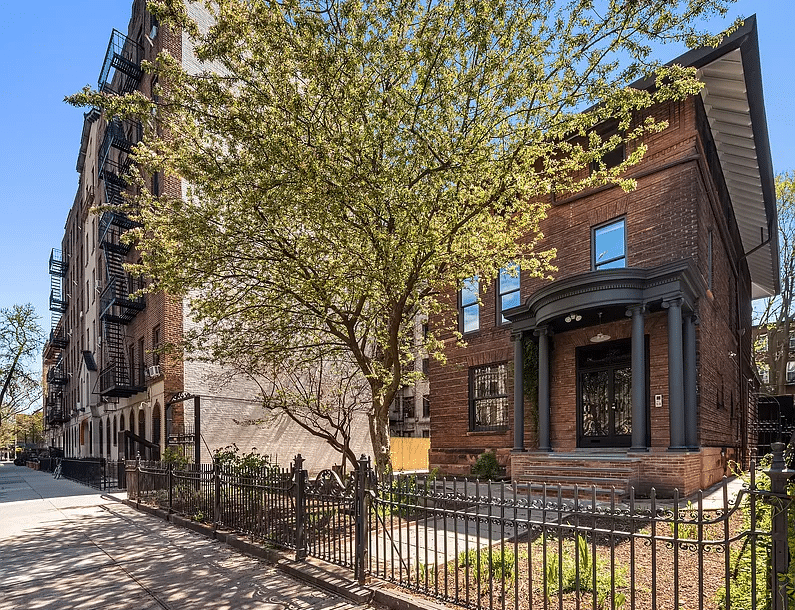The 1939-40 World’s Fair: The World of Tomorrow in Flushing Meadow-Corona Park
A World’s Fair brought the nations of the globe together for a celebration of culture, technology and commerce. Like the Olympics, cities and countries would lobby and fight for the opportunity to host this international event. Architects and visionaries dreamed up buildings and spaces that would reflect the best that modern civilization could be. Scientists…

A World’s Fair brought the nations of the globe together for a celebration of culture, technology and commerce. Like the Olympics, cities and countries would lobby and fight for the opportunity to host this international event. Architects and visionaries dreamed up buildings and spaces that would reflect the best that modern civilization could be.
Scientists and inventors, innovators and merchants looked forward to introducing new wonders, even new foods and entertainments. A World’s Fair could be a glorious event. Especially in a time of economic disaster, with the threat of war hanging over the globe. That was the setting for the New York World’s Fair of 1939-1940.
There have been many great World’s Fairs. One of the greatest was the Chicago World’s Exhibition of 1893, which introduced the world to the wonders and power of electricity. It also ushered in the White Cities and City Beautiful Movements, which brought classical architecture to cities and towns across the nation, and gave New York City such structures as the Brooklyn Museum and Grand Army Plaza, Penn Station, the Municipal Building, the Met, and approach to the Manhattan Bridge.
In 1935, in the middle of the Great Depression, a group of Manhattan businessmen decided to form a committee and lobby for a World’s Fair in New York City. They thought that a grand international exhibition could help lift the economy of the city, and perhaps even the country, out of depression.
The group met and formed a formal corporation; the New York World’s Fair Corporation (NYCWFC). Their headquarters was high up in an upper floor of the Empire State Building. They chose Grover Whalen, the former Chief of Police as their president. The group included many influential business leaders and Mayor Fiorello LaGuardia as members.
For the next five years, they planned their fair. At the urging of the city’s Parks Commissioner, Robert Moses, they chose a huge ash dump in the middle of Queens as the perfect site for the exhibition. Moses had long wanted to clear out the dump for a park, and this way, he didn’t have to pay for it; the cost would be borne by the NYCWFC.
A World’s Fair always has a theme, and this one was the first to draw on the promises of tomorrow. That was fitting, as the world was in sad shape at that moment, and having a bright tomorrow was something that the nations, cities and corporations that participated could certainly get behind.

The official slogan was “The Dawn of A New Day” with emphasis on the “World of Tomorrow.” The official literature of the fair put it this way: “To its visitors the Fair will say: ‘Here are the materials, ideas, and forces at work in our world. These are the tools with which the World of Tomorrow must be made.’”
The main purpose behind the fair, other than making money for the corporation, was to make money for the city and to uplift the spirits of the nation. But that isn’t the kind of thing you can put in a brochure, so the Committee decided to have the fair celebrate the 150th anniversary of George Washington’s inauguration as the first President of the United States. The fair was set to open on that exact anniversary day.
Like previous World’s Fairs, the advances of science and technology were an important part of the exhibitions. For the country’s scientists, this was the most important part of the fair. Albert Einstein, Harold Urey and other prominent scientists urged the Committee to make science and scientific thought a key feature of the park.
Grover Whalen, who had the heart of a showman and the mindset of a used car salesman, had a different plan. He wanted consumer goods and entertainment to be front and center, because he knew that’s where the money was. He gave the scientists lip service and some space, but in actuality, there wasn’t very much real science exhibited at the fair that year.
The fairgrounds were arranged in themed zones. The official colors of the fair were blue and orange, which were also New York City’s official colors. The zones used color to differentiate themselves, as well as tie into the overall theme. Most of the zones were arranged in a semi-circular pattern around the center Theme Zone.
The fair had a Government Zone, a Transportation Zone, Communications and Business Zones, a Food Zone, and more. The central Theme Zone was all white, and featured the iconic landmarks of the fair; the Trilon and the Perisphere.

The Trilon was a pyramid shaped structure, over 600 feet tall. Attached to it, and leading to the Perisphere was, for its day, the longest escalator in the world. The Perisphere was a huge hollow sphere, 180 feet in diameter. Inside was an enormous diorama called “Democracity” which depicted a utopian city of the future, keeping with the theme of the “World of Tomorrow.”
The city was projected on the sides of the sphere. People stood on the moving sidewalk and circled the City of Tomorrow. From there, they made their way downstairs to the third part of the Theme Zone, the Helicline, a 950 foot ramp that spiraled down and around the Perisphere back to the park.
Opening Day at the 1939 New York World’s Fair was a hot April 30th, a Sunday. Many of the buildings in the fair had yet to be completed, but they wanted to keep to the plan of opening on George Washington’s inaugural anniversary, which had taken place in New York City. The opening went off with much pomp and celebration, with 206,000 people on hand.
One of the opening’s great features was the unveiling of the television. David Sarnoff, the president of RCA unveiled one of the first television sets to the public. President Roosevelt gave a speech that was carried on the television. People were able to see and hear him, albeit on a very small screen on a television with 5 inch tubes.

In addition to FDR, fair goers also listened to a speech about cosmic rays by Albert Einstein, and witnessed the ceremonial switching on of the fair’s lights. Like the 1893 Chicago Exhibition which was the first to use electric lights, the 1939 New York World’s Fair was the first to introduce fluorescent street lighting. We’d never be the same again.
Next time: Some of the new products introduced to the world at the Fair, as well as the innovative architecture and technology. What was going on in the international part of the fair, especially with another world war on the horizon? We’ll also look at the end of the Fair and its aftermath.
Top, postcard of the fair: sjsu.edu.










What's Your Take? Leave a Comment